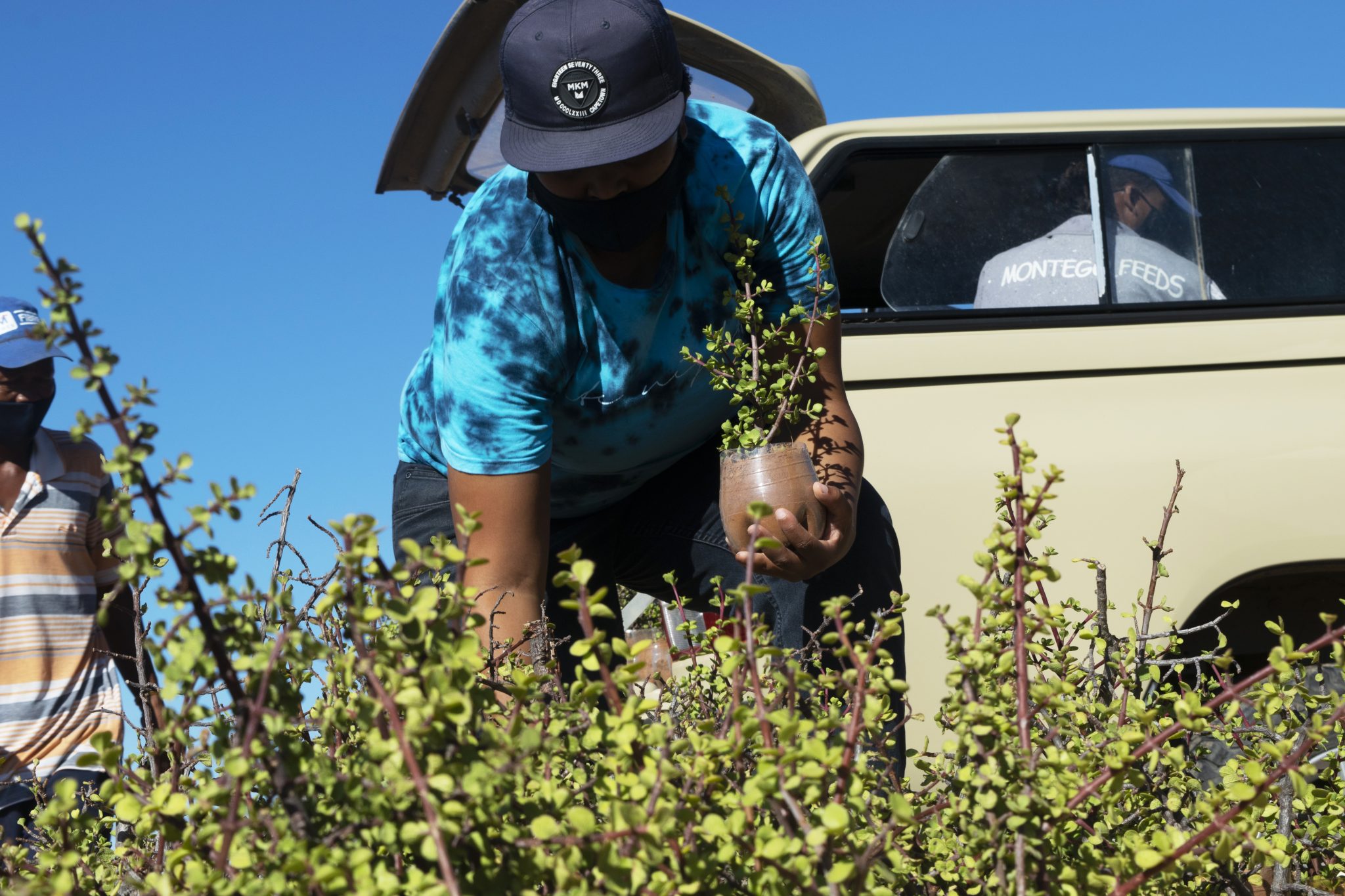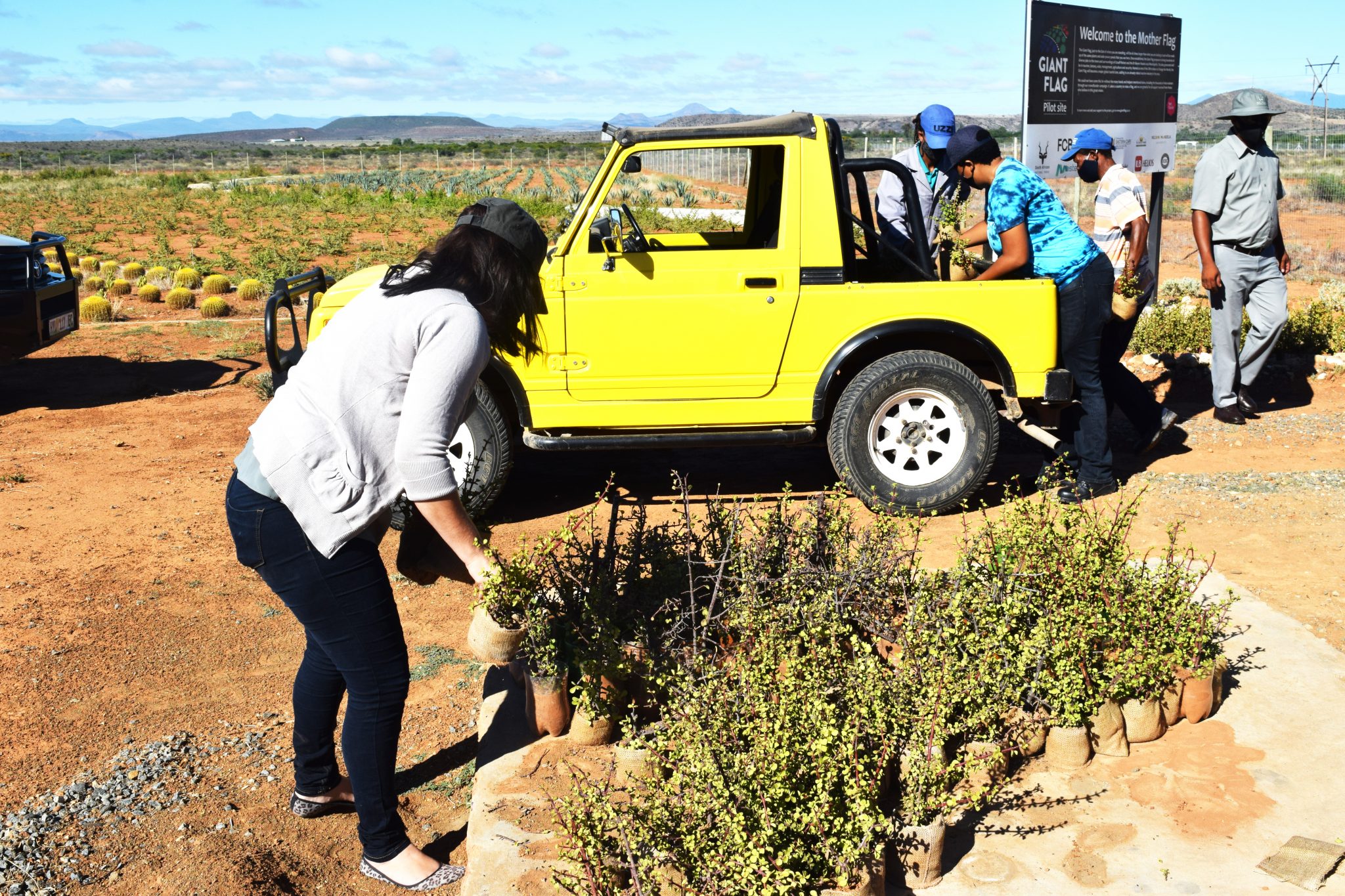The hardy spekboom is considered a pioneer species within the Karoo thicket biome. This means that the plant itself can assist in the regeneration of the indigenous brush, with many other species benefitting from its shade and the nutrients it brings into the soil. As a succulent, spekboom is the ultimate survivor—not even the harsh Karoo droughts can harm these plants. However, for almost two centuries, the Karoo has been travelled
through and farmed.

Over time, the spekboom was used to tamp down the rocky tracks used by the early Voortrekkers with the ox wagons, and eaten by herds of goats and sheep. Not only does it provide these animals with essential nutrients, it has a remarkable capacity to hold water in its stems, leaves and roots. That means that during periods of drought, animals can be rehydrated by eating spekboom.
ReSpek’s mission simultaneously restores eroded semi-arid land, reintroduces nutrients back into the topsoil, sequesters carbon, locks hydrogen into the spekboom thicket, and regenerates biodiversity. As the programme scales, ReSpek will provide more local jobs in a rural community where unemployment sits at approximately 70%.
ReSpek’s ‘Project One’ is the 22-hectare green ‘Y’ in the Giant Flag. Our future goal is to be a key player in the restoration of 1.2 million hectares of spekboom veld, as assigned under the UN Decade of Restoration. We aim to educate the public about this work, the effect of ecological restoration and the negative effects of consumer activity, and how it can be averted. We also aim to establish the premier spekboom planting digital platform and marketplace to encourage landowners to participate in the nature-based carbon market.

ReSpek’s service is designed to take the spekboom planting opportunity to any consumer shopping online, via a pop-up contribution, and who wants to help offset carbon against their purchase. In addition, anyone or any organisation can offset their carbon according to their needs, via monthly subscriptions or large single tranches.
ReSpek Nature received a SEED Low Carbon Award in 2021, as well as being a finalist in the Biodiversity category for Climate360, a global challenge initiated by the EU. We collaborate closely with the SANParks team from Camdeboo National Park, our neighbour, on our planting schedule.
You can find out more on how to get your own spekboom planted, or add us to your store, be it on Shopify or other platforms at www.respeknature.org















